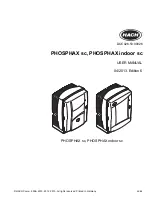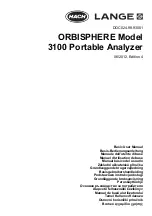
FIGURE 7-2. 109 and 41303-5A Radiation Shield on a tripod mast (left).
109 and RAD06 Radiation Shield on a CM200-Series Crossarm (right).
The 109 is held in the 41303-5A radiation shield by a mounting clamp at the bottom (
(p. 9) left). Loosen the mounting clamp screws, and insert the probe
through the clamp. Tighten the screws to secure the sensor, and route the sensor cable to the
instrument enclosure.
The 109 is held in the RAD06 radiation shield by inserting the sensor through the sensor gland at
the bottom of the shield (
(p. 9) right). Loosen the nut on the gland, and insert the
probe into the shield. Tighten the nut on the sensor gland using an adjustable wrench until the
sensor is securely held in place. Route the sensor cable to the instrument enclosure.
Secure the cable to the tripod or tower using cable ties.
7.4 Water temperature installation
109 probes can be submerged to 15 m (50 ft) or 21 psi. The 109 is not weighted, so a weighting
system should be added, or the probe secured to a submerged object such as a piling.
7.5 Soil temperature installation
The 109 tends to measure the average temperature over its length, so burying the probe such
that the measurement tip is horizontal to the soil surface at the desired depth is usually preferred.
The maximum burial depth for soil that could become saturated with water is dictated by the
maximum water pressure allowed for the sensor, which is 21 psi.
One or two coils of cable should also be buried in a shallow installation. Burial of some cable
mitigates the effect of solar heating of the above ground cable on the temperature
measurement.
109 Temperature Probe
9












































